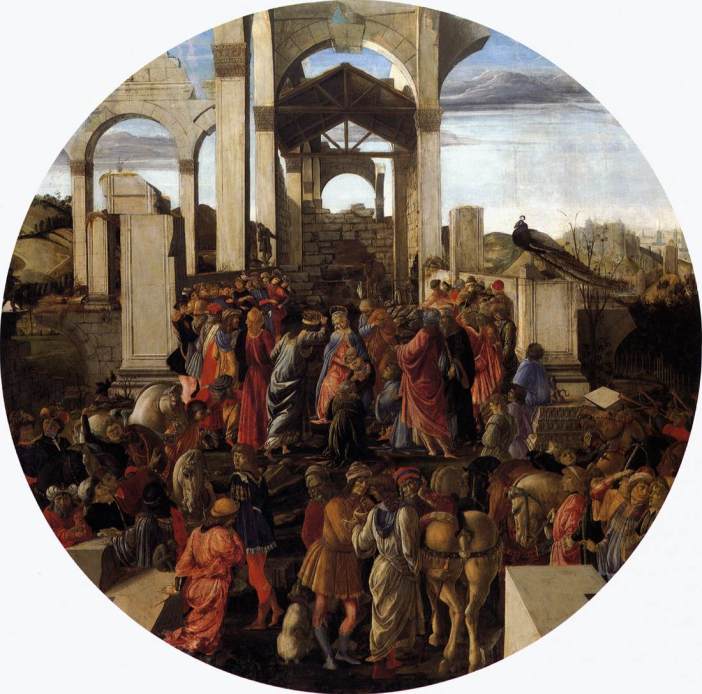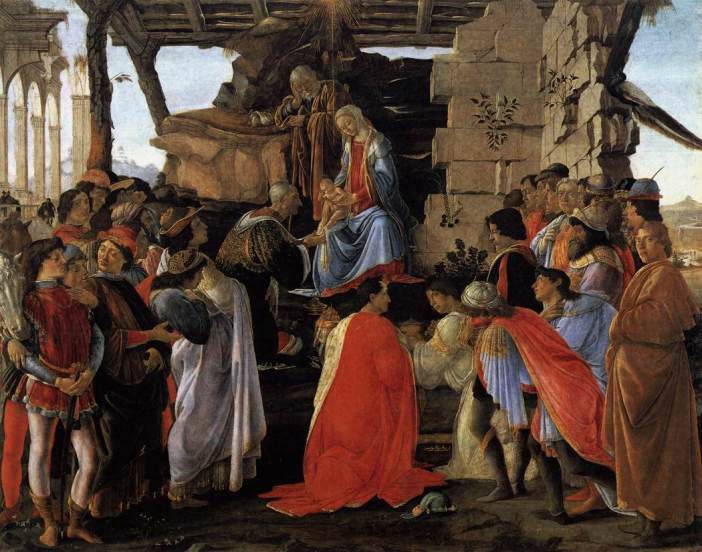The severance between the times of use and waste that ruins undergo endows them with a powerful ability to signify a past, and to make this past an exigent object of narration. We have already noted the relation between the ruin and its former use. We might also argue that, whilst use-time orientates the building towards the future, the ruin is anchored to a use-time that has passed, a temporal relationship without the teleology of use. This might explain the retrogressive narratives that ruins entertain; the categorical and explanatory content of the ruin requires a narrative relation between a past no longer in evidence and a present dominated by the presence of this past. This demand for narrative might also suggest the complicated relationship ruins have with questions of reliability and authenticity; ruins become contested objects embroiled within a variety of interpretations both documentary and fantastic. The allegorical position of the ruin, as an object that appears to be structured by a system of referents, means that the past that the ruin offers is one predicated on a narrative transition between use and waste. If, as Benjamin noted, “In the ruin history has physically merged into the setting”,[1] then this merger is one that can be manipulated, the setting can be rendered a stage to expose the narratives that it mediates.
The ways in which ruins have been utilised to suggest a past has capitalised on the temporal divisions that ruins can effect. The trend, in Renaissance painting, of placing ruins in nativity and adoration scenes, provides a fine example of how ruins can manipulate and be manipulated by the history on display. Although the practice of using ruins in religious works was extremely widespread,[2] two works by Sandro Botticelli should demonstrate how ruins typically function in these scenes. In Adoration of the Magi (c.1472–75), held at the National Gallery, London, the drama is enclosed by the lofting ruins that extend beyond the space provided by the canvas, creating an effect of depth and scale that overwhelms the aperture provided by the tondo. The use of ruins in this painting serves a number of functions, the least of which is to disrupt the horizon and provide an unusual backdrop to the nativity in the lower half of image. But the ruins depicted here also serve to conflate spatial and temporal distance, a feature common to a great range of picturesque works that feature ruins in the far or middle distance. Seemingly remote, both spatially and temporally, these ruins provide a useful contrast to the focal and frequently human concerns elsewhere on the canvas; they are capable of reinforcing a distance of space and translating that spatial distance into a distance felt in time.
With a central nave-like formation running down the centre of the picture, and with other points of access from the left and right, Botticelli’s scene occurs within ruins built on ecclesiastical proportions. Instead of being born in a stable or a cave, as scriptures have tended to stress, Botticelli’s Christ is born in a ruined temple. Of course, as Michel Makarius has noted, this is a structure that is made complicit in the inauguration of the Christian era.[1] These ruins provide a stage set for narrative, a certain kind of triumphant, theological transition between the pagan past and a new, Christian present. For Alexander Nagel and Christopher Wood, this ability for works of this period to allow divergent times to contest one another is an important characteristic of what they call the ‘anachronic’ potential of art: “The ability of the work of art to hold incompatible models in suspension without deciding is the key anachronic quality, its ability to ‘fetch’ a past, create a past, perhaps even fetch a future.”[2] In this characterisation of the artwork, Wood and Nagel have not drifted far from the analysis I gave in earlier chapters through the work of Cornelia Parker and Mark Dion; the capacity to mix and contest times was found to be a key quality of their sculpture. What Nagel and Wood do, however, is to make this anachronic potential an intrinsic quality of artistic production and downplay the way in which the image and reality of ruin, for example, already carries with it a sense of temporal separation, a sense of time divided. The temporal divisions already at work in the ruin are mobilised by Botticelli to signify the passing of the old system, to articulate a New Testament, but also register persisting reality of this passing. The classical arches and shattered pillars are, of course, an architectural style contemporary to the painting’s creation. The anachronic history of the work is made all the more doubled over, folded and irregular for the overt ruination of these structures. The ruin does not just help the work ‘fetch’ a past, the recognition of ruin means that a past, however duplicitous, has already been fetched.
Another work by Botticelli, also called Adoration of the Magi (c.1474–5) though held at the Uffizi in Florence, shows a similar interplay between the time depicted and the time of ruin that lurks as its self-divided shadow.
Here there are three stone structures in view: the ruined arches in the upper left-hand corner; the fragile walls that meet together to the right of the painting; and, finally, the imposing rock that stands behind the figures in the foreground. The antique walls and arches stand dilapidated, with sprigs of vegetation forcing through their fissures, in contrast to the shadowy stone that serves to block the wider panorama beyond the enclosure. Architecturally speaking, Botticelli seems keen to present various kinds of rock formation, all of them open to a disintegration wrought by time. Indeed, among the various architectural features found in Fig. 6.3 one can locate the keystone of the central arch dislodged, hanging delicately over the animal stalls below. We are reminded of the in-between states that helped us characterise the ruin, caught between survival and dissolution, the ‘already-and-not-yet’ of arrested annihilation. Specific to this genre of paintings are the ways in which these figurations of ruin are incorporated within an economy of scriptural reference that stresses different conceptions of time. With these Biblical intertexts in mind, Christ takes the position of yet another, more permanent rock, as both the rock upon which the church is based (Mt 16: 18–20, 1Cor 10: 1–4), and the discarded stone that has been temporarily discarded becomes the sign of eternal completion: “The stone the builders rejected / has become the capstone; / the Lord has done this, / and it is marvellous in our eyes” (Ps 118: 22–33, Mt 21: 42, Mk 12: 10, Lk 20: 17). Whilst this might lead us to conclude that Christian iconography has a distinctly architectural content, which announces and maintains new epochs according to the presence of ruins, it is also one that reinforces the dichotomy between the fleetingly temporal and the eternally spiritual. Brought into view are the etymological roots of ‘temporality’; from the Latin, temporalis, “pertaining to time as a sphere of human life; terrestrial as opp. to heavenly; of man’s present life; worldly, earthly. (Opp. to eternal or spiritual)”[1] Hence, in the writings of St. Paul we find the following distinction, “for the things which are seen are temporal; but the things which are not seen are eternal” (2Cor 4: 18). An additional doctrinal motivation behind depicting ruins in these works might be the division between the ruinam – the fall – of unbelievers and the resurrectionem of the faithful.[2] In both cases, these ruins represent all that has passed or has the capacity to pass, and therefore represent a passage of time as it is made manifest by things. Alongside the birth of Christ, Botticelli’s ruinous, terrestrial structures show how the transience of the built environment serves to both emphasise how Christ exists outside the temporal conditions of use and waste, and, by doing so, seems to reinforce those temporal conditions for all other things. Under this paradoxical economy, Christ becomes the basis by which all other entities are measured and, being eternal and without a past as such, the temporality of ruins in these images become defined by that which cannot go to waste. Rather than simply providing an unusual stage upon which Biblical events might be played out, ruins have helped to differentiate the human from the divine. Indeed, one might cite these paintings as examples of how the human is being defined by its propensity to create things that go to waste. More generally, the pagan, pre-Christian ruins that frequently adorn Renaissance nativity and adoration images display clear attempts to mobilise a powerful quality of the ruin: to invoke a series of unobtainable pasts to whatever present is being expressed. Ruins, then, can consign architectural elements into a past, in order to consolidate a narrative about present times.
We have seen that ruins do not simply represent time, but can help formulate the time of other things, to usher in new beginnings or establish, in uncertain terms, the time of the now. They can stand as the presence of a past, emblematic of a narrative passage between and across times. They do so, in part, because of their untimeliness, their sense of not being exclusively ‘in’ or ‘of’ the time in which they are experienced. This is because ruins have an enfolded, negated present that seems to say, ‘I am no longer what I once was, but what I once was still defines what I am.’ Ruins signify and make articulate their convolved condition, in a way that sets them apart from architecture that operates under the temporal strictures of use. Useful buildings signify whilst ruined buildings make us hesitate over their powers of signification and what it is that makes them articulate. For all their retrogressive, fragmentary and allegorical import, it is by being at odds with a sense of the contemporary that ruins seem to gain their power to suggest a past and thus punctuate time through the condition of disuse. Ruins show a potential to distribute, make and mark time.
[1] Benjamin, 177.
[2] See Michel Makarius, Ruins, trans. David Radzinowicz (Paris: Flammarion, 2004), 17–42; Rose Macaulay, Pleasure of Ruins (New York: Barnes & Noble, 1953).
[1] Michel Makarius, Ruins, 32.
[2] Alexander Nagel and Christopher S. Wood, Anachronic Renaissance (New York: Zone, 2010), 18.
[1] Oxford English Dictionary, 2nd ed., s.v. “temporality.”
[2] See Rab Hatfield, Botticelli’s Uffizi “Adoration”: A Study in Pictorial Content (Princeton: Princeton UP, 1976), 57–67.

